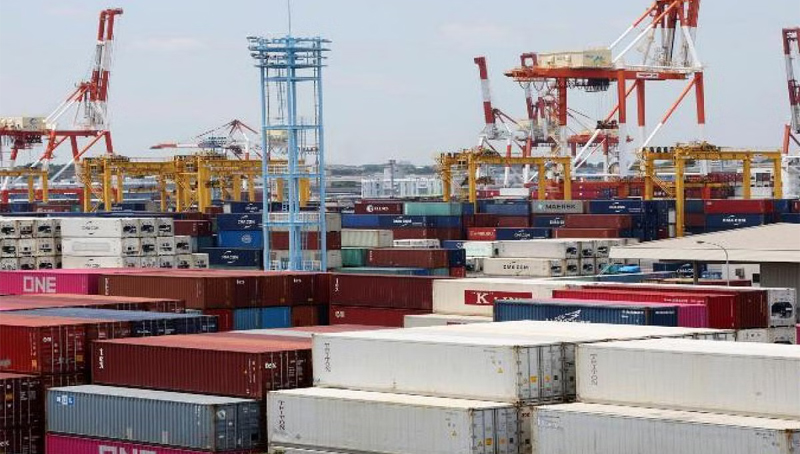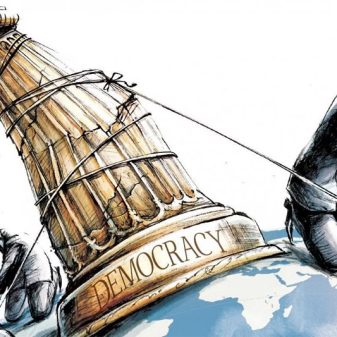
N R Bhanumurthy
As some of us argued, India’s response to Covid and post-Covid recovery was never to be inflationary as most of the measures were taken on the supply side.
The reports from almost all the international financial institutions (such as IMF and World Bank) suggest India is a ‘bright spot’ in the troubled global economy. With a GDP growth of 7 per cent in 2022-23 and a prediction of over 6 per cent growth in 2023-24, India will continue to be labelled as a fast-growing large economy globally. With the inflation being just a tad higher than the targeted level of 6 per cent and relative stability on the external account and in the financial markets, India’s recovery post-Covid appears to be complete and sustainable with no side effects of stimulus policies adopted during the Covid pandemic. To understand this, one must look at the advanced economies’ experiences and what happened in India during the post-2008 crisis.
Further, one must understand what India did differently now compared to the post-2008 crisis and what advanced countries have done during Covid.
As some of us argued, India’s response to Covid and post-Covid recovery was never to be inflationary as most of the measures were taken on the supply side. However, there were a few demand-side measures as well. During the post-2008 crisis, it was largely demand-side measures, and with supply response not being adequate, India has experienced double-digit inflation for over two calendar years. The inflation that India has experienced recently and subsequent interest rate hikes are not entirely due to domestic policies. Instead, it is due to open-economic macro issues such as exchange rate depreciation, an increase in world oil and other commodity prices, and sharp hikes in US interest rates.
In contrast to India’s response, the advanced economies continued to follow textbookish policy response to Covid wherein large interventions are on the demand side, leading to very high inflation that these economies have never experienced in the last four decades.
In contrast, India had a pragmatic policy with the lessons learnt from the 2008 crisis behind us. The outcomes of textbookish policies adopted in advanced countries such as the USA are quite scary, with the probability of mild recession or deep slowdown appearing to be strong and some countries even facing stagflationary conditions.
Regarding financial stability, recent developments in the US and Eurozone banking industry suggest that instability between real GDP growth and inflation appears to affect the balance sheets of the banking and financial sector. And these developments are still playing out, though they may not and should not become a contagion. The effects of these developments in the global banking sector on India were found to be extremely minimum despite the very strong linkages that domestic markets have with US and Euro markets. This suggests the strength of the resilience of the Indian economy from both domestic as well as external shocks. One former CEA said very recently, ‘to avoid economic meltdown, the US should follow India’s COVID economic model’. Similar statements were made during the 2008 crisis as well. But one needs to be vigilant and keep tracing early warning signals to avoid economic disturbances.
Can India grow at 6 to 6.5 per cent in the current year, as predicted by the Government? Are there any risks to India’s present growth prospects? These questions have been raised especially in the context of recent global developments that forced the RBI to continue to hike interest rates. Till now, RBI hiked interest rates by 250 basis points. And there are concerns that further hikes could hamper growth much more than bringing down inflation. In our view, given the current global developments that are still evolving, RBI may try to target an inflation rate a little higher than the median of 4 per cent – between 5 to 6 per cent and that should give monetary policy space for addressing growth concerns.
One risk that is building up in India is the risk of slowing agricultural growth. As some of us raised concerns as early as February this year, agricultural growth could be subdued for some reasons.
First, the El Nino effect, the probability of which is increasing day by day with heat waves across the country, could hamper the sowing this year. Some governments have already cautioned farmers to delay sowing. Second, with three straight years of good agricultural production, it is also natural to experience a decline in marginal output.
And more than this, it is possible to see a decline in all three factors of production. Due to the complete reopening of contact-intensive sectors, the labour force is expected to migrate from rural to urban areas. The area under cultivation that increased sharply in the post-Covid period may decline. And with the demand for credit reviving across the non-food sectors, its availability will be limited. Hence, with land, labour, and capital expected to decline, it is only natural that output may fall. This could have some risks on food inflation in the coming quarters.
Another concern is exports, which are largely a function of external demand.
As external demand could be subdued due to slowing economies, the risk of slowing export growth appears real. But what is riskier is the slowing of imports growth. Some have already started cheering about the narrowing current account deficit. But, for a growing economy like ours, narrowing CAD sharply is not always credit-positive. Rather, it could be an early warning for subdued demand conditions in the economy in the coming quarters. While the economy appears to be going strong, the domestic policy needs to focus on emerging risks and challenges.
(The writer is a Vice Chancellor Dr BR Ambedkar School of Economics University, Bengaluru)(Courtesy: The New Indian Express)





